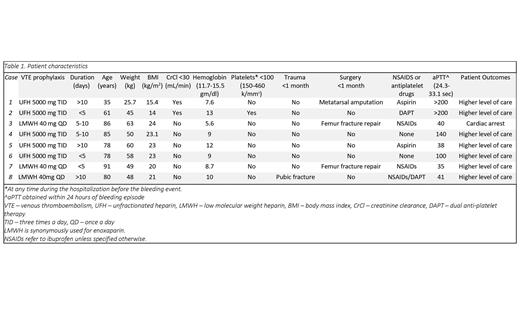The use of heparin products for prophylaxis of venous thromboembolism (VTE) have decreased the prevalence of VTE in all hospitalized patients, however the possibility of bleeding from prophylactic heparin cannot be disregarded. While life-threatening bleeding is less common with prophylactic doses, it can occur in the presence of other risk factors for bleeding. We aim to describe characteristics that may increase bleeding risk from prophylactic use of heparin. We present a single-center, retrospective case series of patients who received protamine for bleeding complications from prophylactic heparin administration at our facility between 2016-2020. We assessed patient demographics, medical history, types of heparin formulations administered, and patient outcomes. We observed that all patients were female. Patients who developed bleeding events from VTE prophylaxis had at least two of these attributes; BMI <18.5 kg/m2, weight <50kg, trauma within 1-month, surgery within 1-month or were taking anti-platelet agents. We suggest that the collective presence of two or more of these characteristics should lend consideration to dose adjustment and/or closer monitoring. In the absence of rigorous research comparing alternative doses to standard doses for prophylaxis in these patients, these decisions fall largely to the discretion of individual physicians. Designing larger studies following patients over long periods of time can help conclusively identify risk factors that predispose patients to bleeding.
Disclosures
No relevant conflicts of interest to declare.


This feature is available to Subscribers Only
Sign In or Create an Account Close Modal